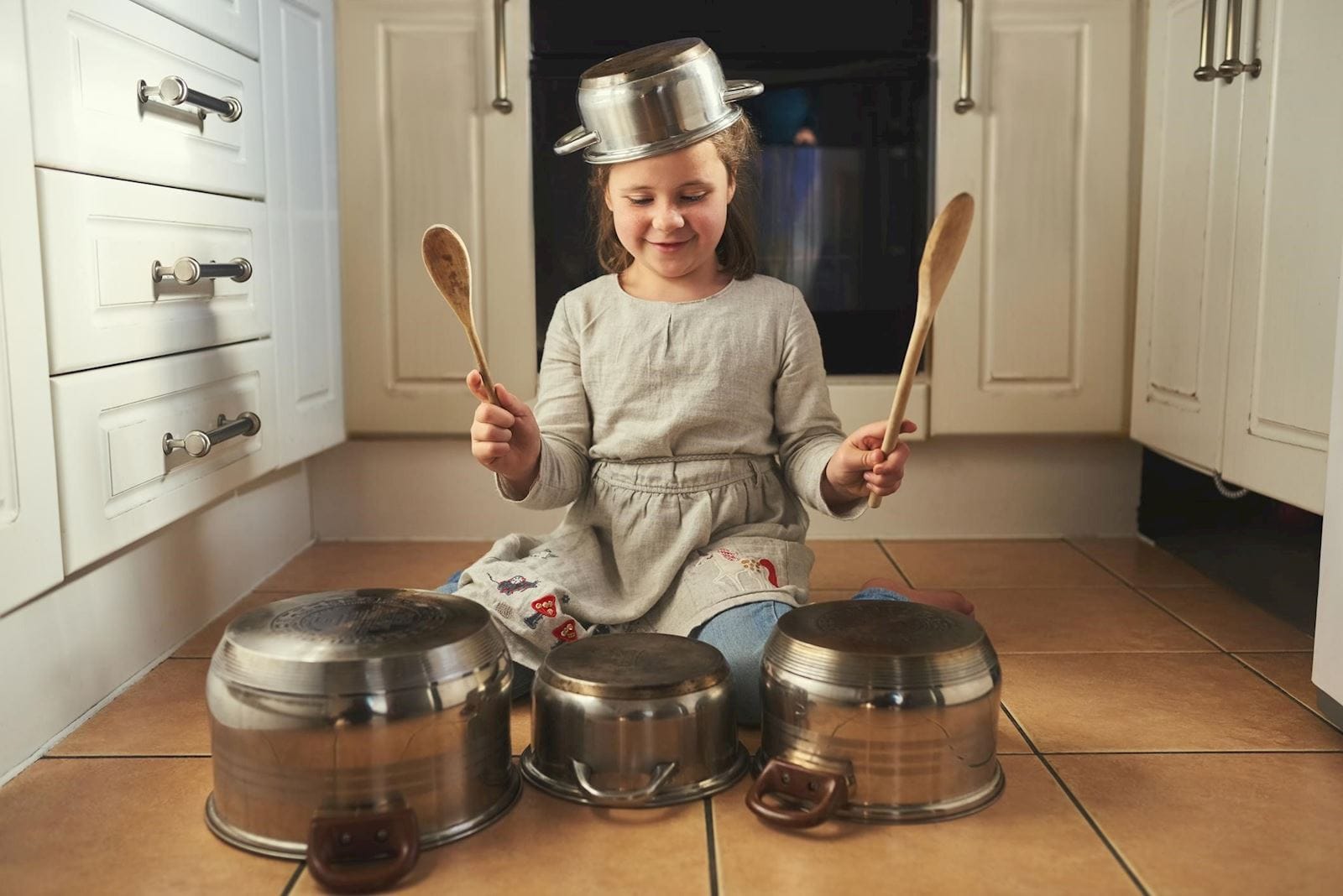Every kid is inattentive or hyperactive at times. When they show a habit of these behaviors, parents play a big part in bringing about positive change.
Posted
by The Iowa Clinic on Friday, May 29, 2020
Compared to their parents, most kids appear hyperactive. They’re always on the go. They’re easily distracted. And they have endless amounts of energy.
When parents worry about their kids having attention-deficit/hyperactivity disorder (ADHD), they tend to focus on this hyperactivity. But more attention should be paid to the last word in the condition: disorder.
ADHD is a chronic illness. More than 60 percent of children who have it carry it with them into adulthood. Early diagnosis can help your child receive the treatment they need and give you the tools to help them manage their condition.
ADHD symptoms are common behaviors seen in all kids.
ADHD is complex. You can’t simply check off a few symptoms from a list and diagnose it. At one point or another, every single child showcases an ADHD symptom. You may see it and think there’s something wrong. But on the whole, they’re exhibiting normal behaviors for a child their age.
Those behaviors are outlined in the American  Psychiatric Association’s Diagnostic and Statistical Manual, Fifth Edition (DSM-5) and fall into two groups: inattention and hyperactivity/impulsivity. Within each category, there are nine symptoms associated with ADHD.
Psychiatric Association’s Diagnostic and Statistical Manual, Fifth Edition (DSM-5) and fall into two groups: inattention and hyperactivity/impulsivity. Within each category, there are nine symptoms associated with ADHD.
Signs of Inattention
Attention is half the problem in ADHD. Whether it’s to you or a teacher, at home or at school, kids with ADHD may find it hard to pay attention. And that interferes with their ability to listen, learn and even think. Your child may have trouble:
- Paying attention to details or make careless mistakes
- Focusing on tasks or at play
- Listening when you or a teacher speaks to them directly
- Following through on instructions, homework or chores
- Organizing tasks or activities
- Completing tasks that require mental effort over a long period of time and express their dislike or completely avoid these things
- Keeping track of their belongings, like school supplies, glasses or a phone
- Remembering things in daily activities
- Avoiding distractions
Signs of Hyperactivity and Impulsivity
An excitable kid with high energy who acts on their every impulse may fall on the hyperactivity and impulsivity end of the disorder. These behaviors can be more disruptive, especially in school. Your child might:
- Fidget, squirm and constantly tap their hands or feet
- Get out of their seat in school, church or other situations where they should remain seated
- Run and climb in inappropriate places or situations
- Be unable to play or take part in leisure activities quietly
- Have a high motor and always be on the go
- Talk excessively
- Blurt out answers before questions are completed
- Have trouble waiting their turn
- Interrupt conversations and games
You may look at these lists and think, “Yeah, that’s my kid.” While in the wrong settings, many of these behaviors are disruptive — even embarrassing — they might be completely normal for your child’s age. For example, many parents start worrying about ADHD in their toddlers. But these symptoms are normal for children at that developmental stage.
The signs can still show up pretty early on though. ADHD can be diagnosed as early as four years old. To be diagnosed between the ages of four and 16, a child must show six or more symptoms for more than six months, with most signs appearing before age 12. And the behaviors have to show up in more than one setting, like at both school and at home, and cause problems in those settings.

Wondering if Your Kid's Behavior is Normal?
Your first call should be to your pediatrician so you can understand when normal turns disruptive.
Schedule an Appointment
ADHD is the same as ADD.
They used to be considered different disorders. If a child showed inattentive symptoms, they were diagnosed with ADD. If they showed hyperactive or impulsive symptoms, it was ADHD.
Now, they are considered the same disorder — just different variations of it. Depending on which set of symptoms a child has, they fall into one of three categories:
- Predominantly inattentive – This is what used to be known as ADD. A kid displays most signs of inattention but isn’t hyper or impulsive.
- Predominantly hyperactive-impulsive – A child can focus and pay attention, but shows many signs of hyperactivity and impulsivity.
- Combined – Most children with ADHD are a mixed bag. They have symptoms from both sides of the disorder.
ADHD behaviors are so interconnected that they can change over time. Your child could be diagnosed with the combined form of ADHD and, years later, be predominantly inattentive. When their symptoms change, their treatment may change too.
There’s more to managing ADHD than medication.
By the last count, more than 11 percent of children in Iowa were diagnosed with ADHD, according to the 2011 National Survey of Children’s Health. Eighty percent of them are taking medication for it.
Ritalin and Adderall are well-known ADHD medications and are effective for the majority of children. They are fast-acting stimulants that reduce the number and severity of symptoms. But they don’t work for every child. Non-stimulants are used instead when stimulants are ineffective or present unwanted side effects like sleep issues, poor appetite and social withdrawal.
Medication is often used alongside behavior management, and that’s where parents come in. The American Academy of Pediatrics (AAP) just updated their guidelines for treating children with ADHD in September. The new guidelines emphasize parent training in behavior management and recommend it as the first-line of treatment — before medications — for children six and under.
Parenting Tips for Helping a Child with ADHD
Raising a child with ADHD can be challenging, especially in the early years when they are rapidly developing and aren’t old enough to try medication. But no matter their age or prescription, parents play a major role in managing problematic behaviors.
The AAP’s advice boils down to structure, organization and simplification. You can only really control the home environment. But if you do what you can to make things simple and structured, you can help improve your child manage their condition.
- Create a routine. Schedules are a must. They set expectations from breakfast to bedtime, helping to keep kids focused on tasks or activities while limiting their distractions.
- Organize everything. In addition to structuring your child’s days, structure their environment. An orderly environment where every toy and item has a home helps forgetful children keep track of their belongings.
- Limit their choices. The amount of options can be overwhelming for children with ADHD. Make your child’s life more manageable be letting them choose from a limited set of options, whether it’s what they want to eat or what they want to do during the day.
- Make lists. Break things down step-by-step for them. Lists help limit choices, build good habits and set clear paths for long-term and otherwise unmanageable tasks. For younger kids, illustrated lists are more effective. Use pictures that illustrate the steps they need to complete. You can make it interactive by allowing them to move a picture to a different area on the chart to help give them a sense of achievement.
- Stay positive. Rewarding good actions is a major component of behavior therapy. You must outline clear consequences and discipline for poor behavior. But positive reinforcement is critical. Offer up affection, praise, or prizes when they hit their goals, accomplish their tasks or even just pay attention.
Help establish healthy habits. An unhealthy lifestyle can make ADHD symptoms worse. Make sure your child is eating right and getting plenty of exercise and sleep.
Additional Help for Parents and Children with ADHD
You control the home, but ADHD behaviors are present in at least one other setting. So you need additional support and coordination with teachers, family and the community to help your child manage their condition when you’re not there.
Your kid may require additional assistance in the classroom or other services at school where they have behavioral specialists trained to help. Keep an open line of communication with your child’s teachers and the staff at their school to better coordinate your efforts and keep tabs on progress.
Teachers are also important in diagnosing ADHD. They provide valuable insights into whether a child is having the same difficulties at school as they are elsewhere. If you or a teacher are concerned about your child’s behavior, set up an appointment with your pediatrician to get an accurate diagnosis of the type and receive proper treatment. It’s a team effort, but with the right tools, your child can succeed and thrive despite their condition.